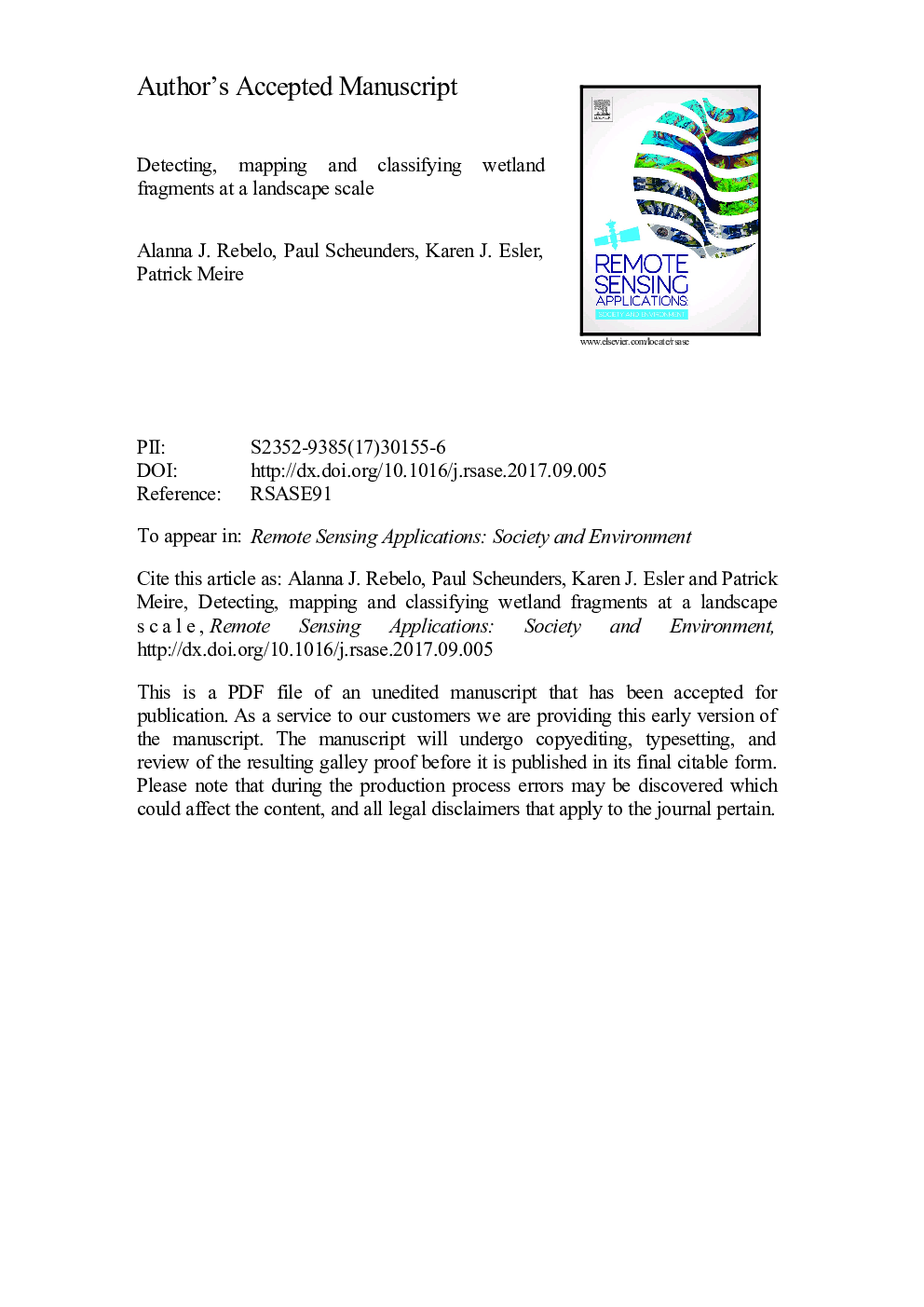| Article ID | Journal | Published Year | Pages | File Type |
|---|---|---|---|---|
| 5754616 | Remote Sensing Applications: Society and Environment | 2017 | 30 Pages |
Abstract
Small valley-bottom wetlands (<5Â km2) are often overlooked in conservation and restoration efforts due to the difficulty to discriminate them in large regions. However due to their position in the landscape they are both critical for ecosystem service provision as well as highly threatened. Therefore there is a need to detect and map the extent of small valley-bottom wetlands to aid conservation and restoration efforts. We investigated five research questions concerning small, valley-bottom palmiet wetlands in the Cape Floristic Region (CFR), South Africa: (1) What is the best technique to detect palmiet wetlands?, (2) what is the best approach to map their extent?, (3) how best to analyse their potential extent and historical changes?, (4) what is their current extent and distribution and how has this changed historically?, and (5) what are the main drivers of this change? We used three different approaches to answer the various questions: multispectral imagery (the Landsat series) combined with Support Vector Machine classification, aerial photograph analysis with photographs from three time-steps and predictive modelling of wetland habitat suitability (using the MaxEnt model). Our main findings suggest that (1) multispectral classification using Landsat8 was best for palmiet wetland detection (76% accuracy), whereas (2) aerial photographs were the most useful in mapping extent. (3) Analysing changes in extent over time was best achieved using aerial photography, due to their high resolution and long historical record in South Africa (1940 compared to 1970 in the Landsat series). (4) South African palmiet wetlands are in decline, having decreased by on average 31% in area since the 1940/50s (overall loss of 6.36Â km2). Palmiet wetlands have also become increasingly fragmented, with weighted wetland perimeter increasing by 29% over the same period. (5) The major driver of this appears to be gully erosion triggered by land-use change. The wider implication of these findings is that it is possible to detect small wetlands using freely available Landsat8 data which could be useful to support local or regional conservation and restoration initiatives.
Related Topics
Physical Sciences and Engineering
Earth and Planetary Sciences
Computers in Earth Sciences
Authors
Alanna J. Rebelo, Paul Scheunders, Karen J. Esler, Patrick Meire,
